Viknes 10 Review: Award-winning 35ft triple cabin wheelhouse cruiser
Built for all weathers, this triple cabin 35 footer packs in the features. Greg Copp puts her to the test.
Home / Reviews / Electronics
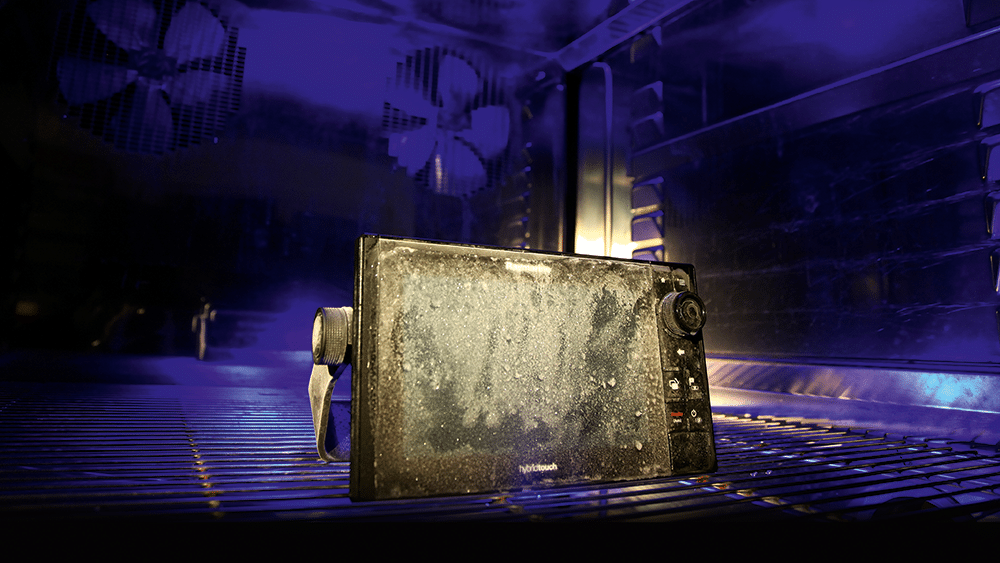
The facility, based at the UK head office in Fareham, provides a comprehensive range of accredited marine environmental testing, from hard drops to prolonged vibration, extreme temperatures, wireless emissions, relentless rain and spray, full submersion and the simulation of months at sea inside a salt mist chamber. At present, we employ some eight people in this specialist department and dedicate more than £2 million worth of resources to ensuring our products remain fit for purpose and robust enough to cope with anything they may be subjected to.
Sure. Well, as you will appreciate, vibration is the hidden enemy for both electronics and mechanical structures. Constant shaking across a range of frequencies can create loose connections, fatigue wires, damage solder joints and result in equipment failure. But vibration testing at Raymarine’s environmental test centre goes well beyond standard tests. In the shaker room, vertical and horizontal shakers perform swept sine and dwell tests, subjecting items to a vibration sine tone across a broad frequency range. Where a resonance is found during the sweep, testers dwell on that frequency for two hours, then check for fatigue damage. The standard test is 5Hz – 100Hz, but we push that to 600Hz, as well as performing shock and random vibration tests simulating and surpassing real-life vibration data from customers’ boats.
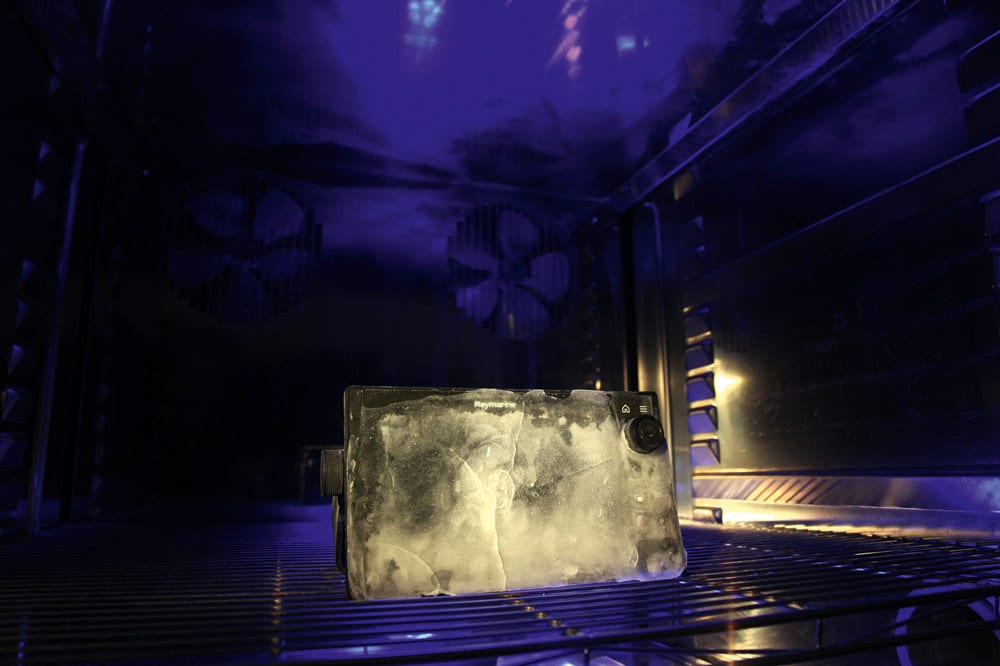
Thermal storage containers with temperatures between -30°C and 70°C.
Yes, that’s right, but it’s not just big vessels – electromagnetic compatibility issues can be problematic on all manner of smaller craft too. But following the brutal vibration and drop testing we undertake, products are taken to the EMC [electromagnetic compatibility] area, where power supply tests are performed. Interference from switching on other boat equipment can disrupt the shared power supply, so these tests ensure that products will continue to work over the various voltage ranges they might experience. The tests cover issues such as voltage drops, inrush current and surges. Products are then moved to Raymarine’s radiated immunity chamber, where testing ensures that products can still operate efficiently when exposed to a powerful radiated electromagnetic field. The walls of the test chamber are covered in pyramid-shaped material designed to prevent reflections so that only the direct signal from the antenna is received, making it easier to produce a uniform test field. In this process, the transmit antenna is placed at the far end of the chamber while the test product is placed on a table in the pre-calibrated field and monitored to ensure it operates correctly under radiation, without failures such as lines of interference appearing on a video feed. In a separate chamber, radiated emissions testing identifies the unintended release of electromagnetic energy. To prevent interference from external signals, the outer chamber is made from two layers of steel. Inside, a combination of ferrite tiles and blue absorber material stops reflections.
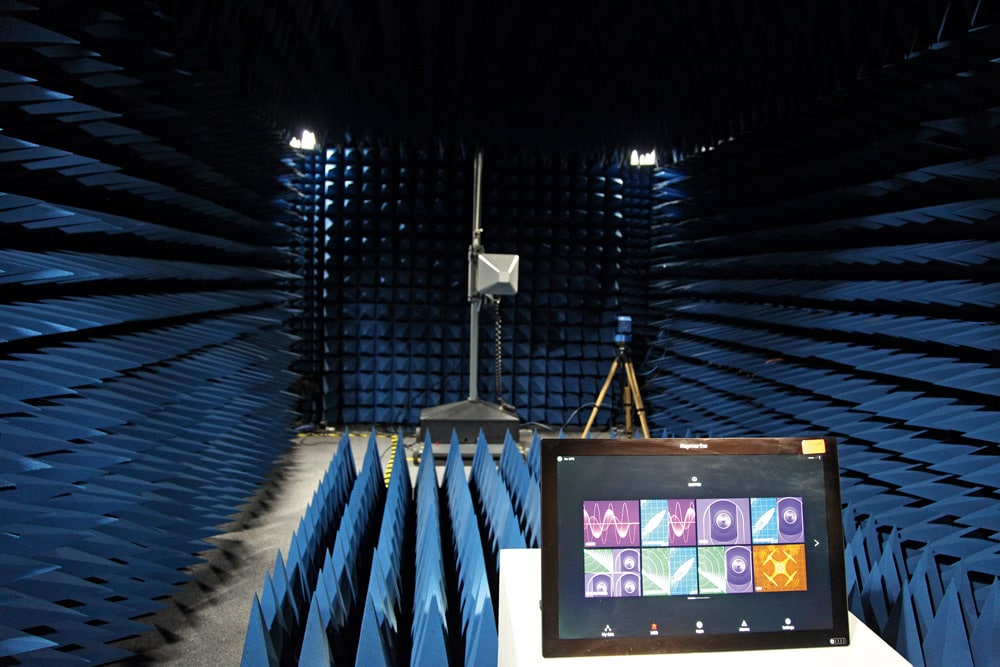
In a separate chamber, radiated emissions testing identifies the unintended release of electromagnetic energy.
Mariners operating in, for example, polar waters can experience huge seas and sub-zero temperatures. Likewise, closer to the equator, searing temperatures create a new set of demands. In either extreme, functional electronics remain a matter of survival, which is why Raymarine give all their products such a punishingly hard time at their environmental test centre. Extreme temperature testing takes place in specially designed thermal chambers, where products are repeatedly tested and soaked overnight to ensure they start up, restart and function over a massive temperature range of between -25°C and 55°C, and also survive non-operational storage in temperatures of between -30°C and 70°C.
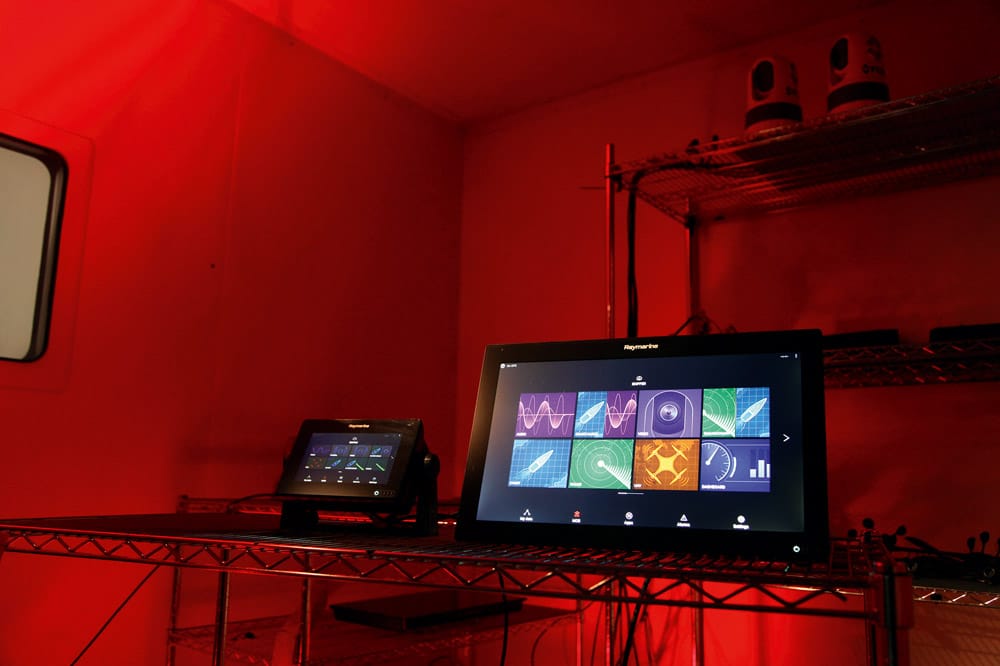
During hot-room testing, products are placed inside a 55°C chamber, where they can remain for months.
During hot-room testing, products are placed inside a 55°C chamber for life tests, where they often remain for months. Along similar lines, an IR [infrared radiation] test simulates noon sunshine to ensure that displays don’t black out and that no sunlight damage, such as glow marks or buckled film, occurs inside the display panels. Thereafter, the salt mist room exposes products to continuous salt spray for two hours before they are then left for seven days in a warm, damp atmosphere. This process is repeated four times, taking the test duration to 28 days. Products are then examined to ensure that salt and water have not damaged the coatings causing blisters, cracks or colour loss.
Absolutely. We have a dedicated laboratory wet room – a water ingress area where all our special IPX6 tests are carried out. Products carry this rating if they can withstand arduous tests designed to assess an item’s water and/or dustproofing capabilities. One such test requires products to be continually sprayed with at least 100 litres of water per minute from a fire hose for a minimum of 30 minutes, and for the unit to continue to function both during and after the test. The industry standard requires products to be left in a damp and drizzly atmosphere for half an hour, but we leave them in for an entire day to replicate real-world usage, with testers taking the products apart afterwards to make sure there’s no water inside. A drip of water over the life of a product becomes a flood inside the unit and is unacceptable.
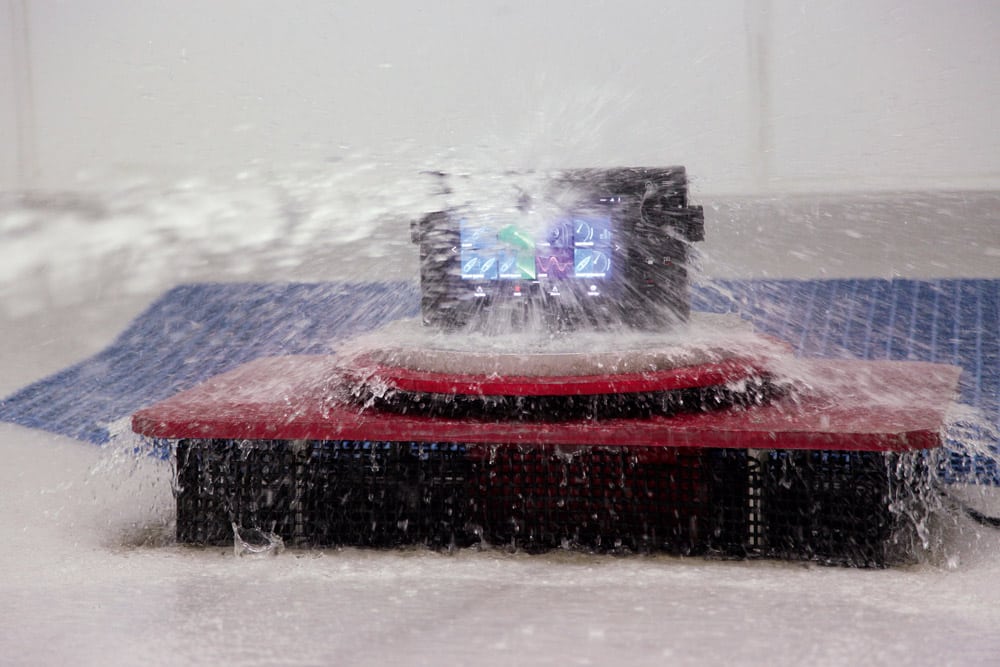
One test requires products to be continually sprayed with at least 100 litres of water per minute from a fire hose for a minimum of 30 minutes.
However, these water ingress tests are just the opening act. Subsequent IPX7 tests determine products’ abilities to withstand immersion at a defined depth for a specified duration. The immersion tanks are also used to check sonar transducer performance. As thorough as the above test procedures are, Raymarine do even more. They employ AIS simulators to test AIS transceivers, DSC base station simulators for radios, GNSS simulators, Wi-Fi simulators and more.
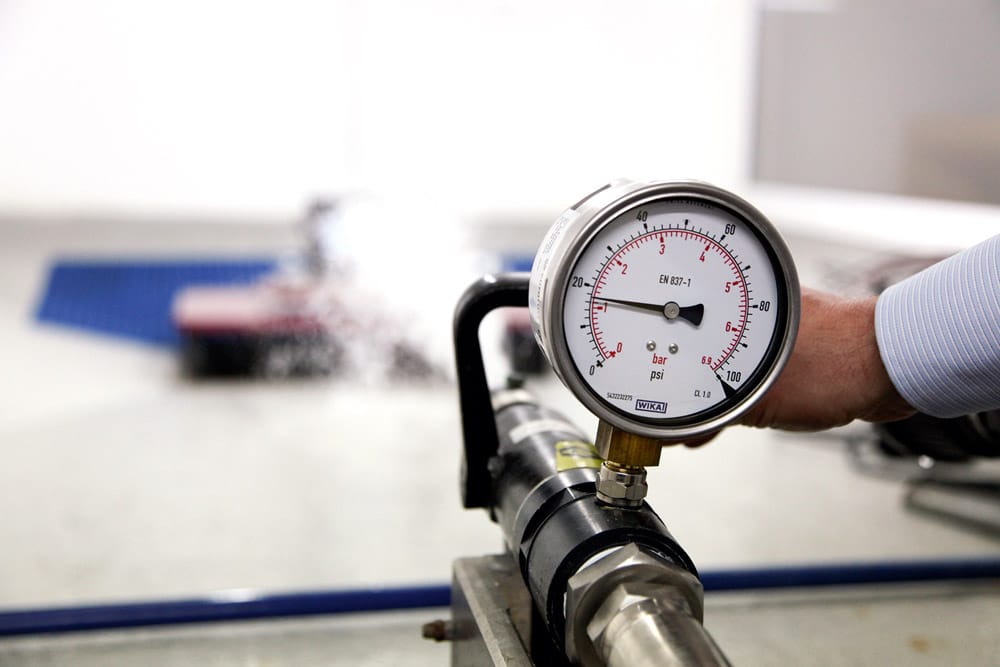
30 minute high-pressure water test.
The effects of global warming and changing weather patterns directly impact the environment our customers operate in, thereby increasing the need for fast access to critical information, such as weather and sea conditions, to maintain up-to-date awareness of this dynamic environment. Regardless of these ever-increasing challenges, our task will continue to be to design robust and reliable products for use in a wide range of conditions and applications.
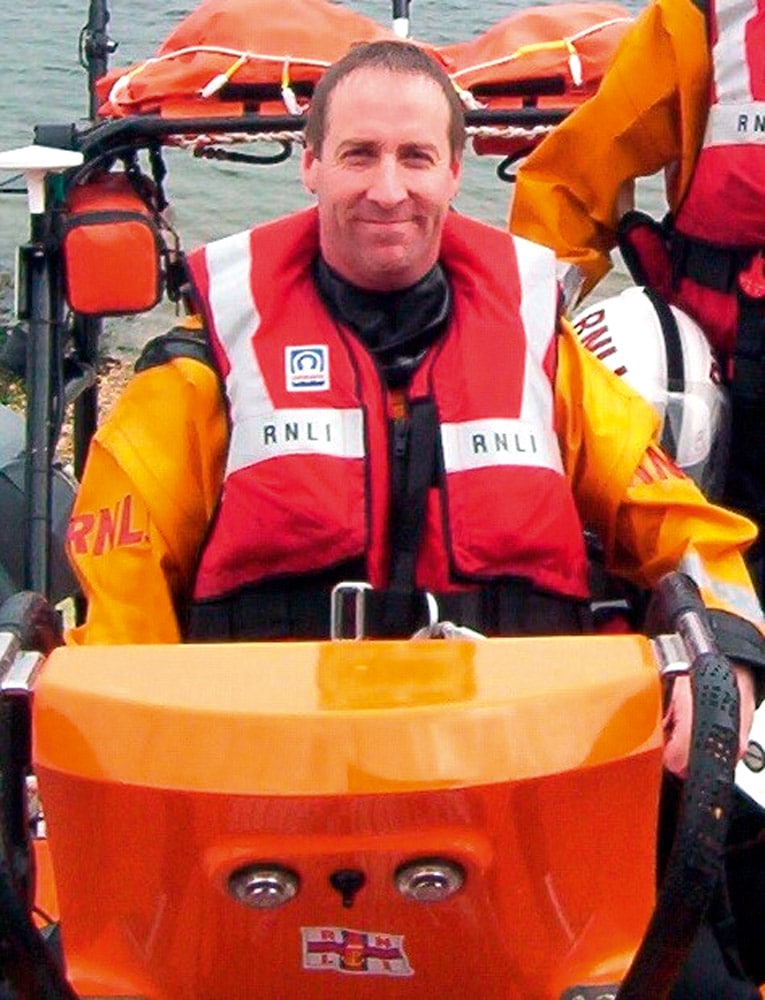
Raymarine’s dedicated environmental testing and electromagnetic compatibility team shares in excess of 250 years of design and test experience in mechanical, electronic and electromagnetic compatibility disciplines. Neil Millerchip has a wealth of marine electronics experience, both in the military and leisure marine sectors. Providing technical, logistical and development support, Neil manages the Raymarine product assurance team and associated test facilities.
Raymarine make high-performance marine electronics for the recreational boating and light commercial marine markets. With a legacy of marine navigation technology spanning over 80 years, Raymarine products aspire to being rugged, above all reliable, and highly functional as well. The company’s range of marine electronics is available through a global network of dealers and distributors. For more information visit www.raymarine.com




Built for all weathers, this triple cabin 35 footer packs in the features. Greg Copp puts her to the test.


Across the season’s boat shows — from Southampton to Cannes and Genoa — one theme stood out: innovation is thriving,…
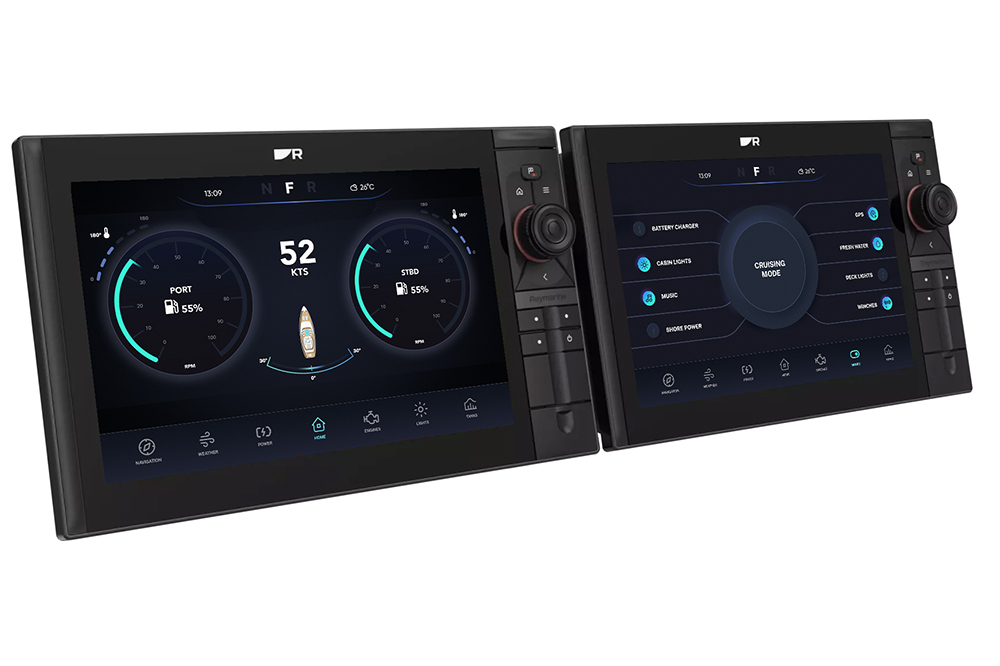

Raymarine expands the capability of its Axiom MFDs through new collaborations with Maretron and WATCHIT, delivering enhanced vessel control, advanced…
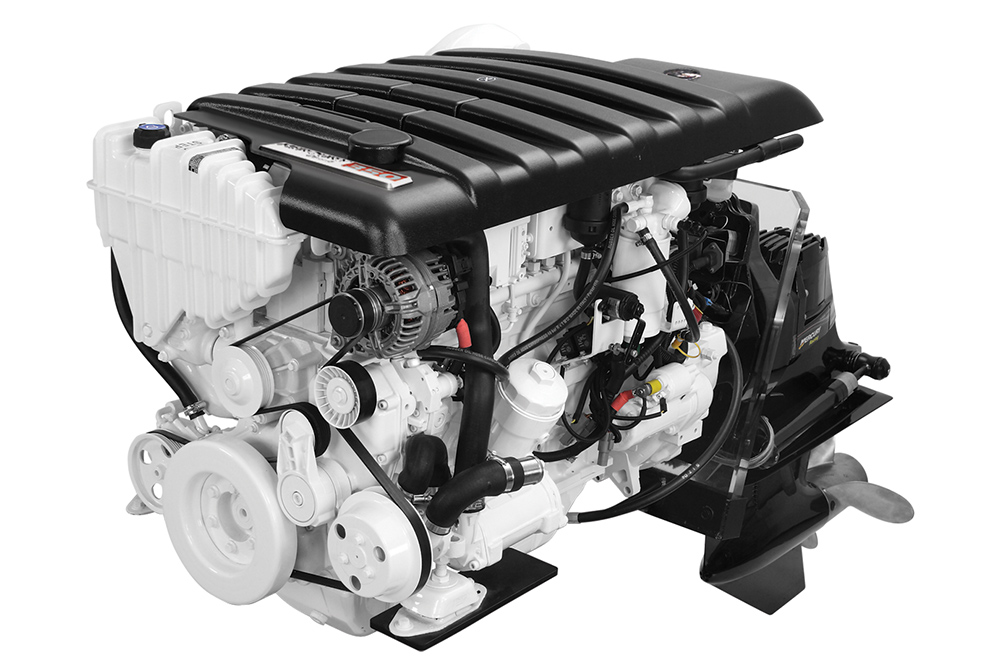

Mercury Marine unveiled the updated 4.2L diesel engine, now RCD II compliant and HVO capable. Lighter, cleaner, and easier to…